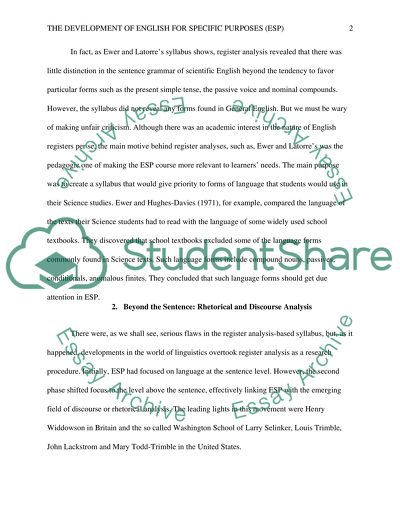Cite this document
(“The development of English for specific purposes (ESP) Essay”, n.d.)
Retrieved from https://studentshare.org/humanitarian/1688747-the-development-of-english-for-specific-purposes-esp
Retrieved from https://studentshare.org/humanitarian/1688747-the-development-of-english-for-specific-purposes-esp
(The Development of English for Specific Purposes (ESP) Essay)
https://studentshare.org/humanitarian/1688747-the-development-of-english-for-specific-purposes-esp.
https://studentshare.org/humanitarian/1688747-the-development-of-english-for-specific-purposes-esp.
“The Development of English for Specific Purposes (ESP) Essay”, n.d. https://studentshare.org/humanitarian/1688747-the-development-of-english-for-specific-purposes-esp.


